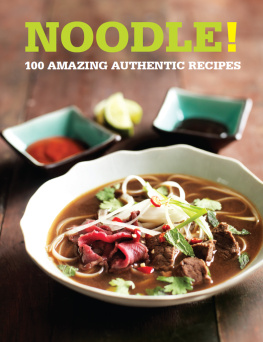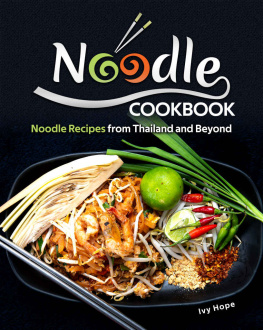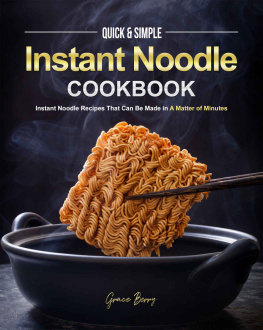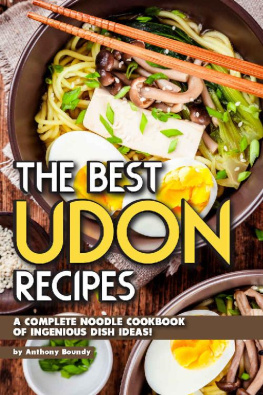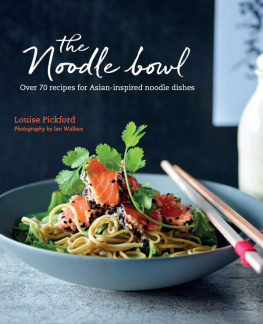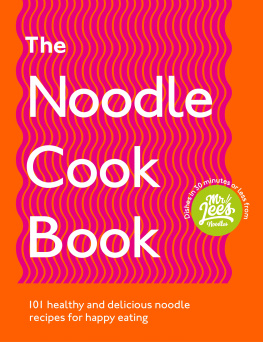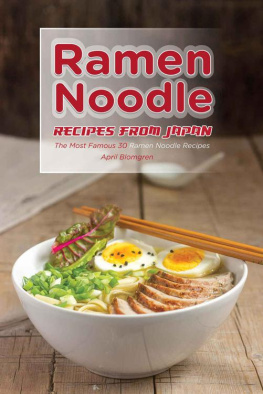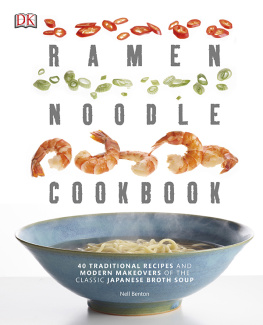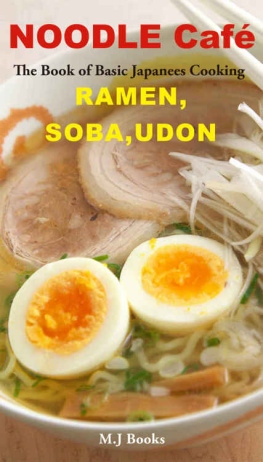This electronic edition published in 2014 by Bloomsbury Publishing Plc
First published in Great Britain in 2014 by Absolute Press, an imprint of Bloomsbury Publishing Plc
Absolute Press
Scarborough House
29 James Street West
Bath BA1 2BT
Phone 44 (0) 1225 316013
Fax 44 (0) 1225 445836
E-mail
Website www.absolutepress.co.uk
Text copyright MiMi Aye, 2014
This edition copyright Absolute Press, 2014
Photography copyright Mike Cooper
Publisher Jon Croft
Commissioning Editor Meg Avent
Art Direction and Design Matt Inwood
Project Editor Alice Gibbs
Editor Norma MacMillan
Photography Mike Cooper
Food Styling Genevieve Taylor
ePub ISBN: 9781472910608
Print ISBN: 9781472905673
The rights of MiMi Aye to be identified as the author of this work have been asserted by her in accordance with the Copyright Designs and Patents Act 1988.
All rights reserved
You may not copy, distribute, transmit, reproduce or otherwise make available this publication (or any part of it) in any form, or by any means (including without limitation electronic, digital, optical, mechanical, photocopying, printing, recording or otherwise), without the prior written permission of the publisher. Any person who does any unauthorised act in relation to this publication may be liable to criminal prosecution and civil claims for damages
Bloomsbury Publishing Plc
50 Bedford Square
London WC1B 3DP
www.bloomsbury.com
Bloomsbury is a trademark of Bloomsbury Publishing Plc
A note about the text
This book was set using ITC Century and Serifa.
The first Century typeface was cut in 1894. In 1975, an updated family of Century typefaces was designed by Tony Stan for ITC. The Serifa font was designed by Adrian Frutiger in 1978.
Thanks
Thank you first and foremost to my husband Simon, my parents U Zaw Min and Daw Khin Hnin Wai, and my in-laws Sheila and Martin for all their love and support.
Thank you to my agent Juliet Pickering at Blake Friedmann and Jon, Matt and Alice at Absolute Press for believing in me, and thank you to Gen and Mike for the stunning photos.
Thanks to Mat Follas for getting me into this food lark in the first place, to Graham Holliday for getting me into blogging, and to Marina OLoughlin and Craig Brown for the (comic) inspiration.
Lastly, thanks to my old school teachers Colin Simpson, Charles Dormer and Stan Wolfson I learnt more about the written word from them than anyone else.
This book is for my beloved baby daughter Thida, who tried her very best to stop me writing it. Lets hope Im less sleep-deprived for the next one, eh?
About MiMi Aye
An obsession with food, especially Burmese cuisine, led to MiMi starting www.meemalee.com where she shares her culinary thoughts, recipes and reviews. Due to her eloquent and often wry turn of phrase, her blog is popular worldwide, although particularly in the Netherlands for reasons she has never been able to fathom.
Recommended by Lonely Planet and Time Out, MiMi has appeared on BBC Radio 4's Food Programme, in the Guardian, the Telegraph and Metro. Her recipes featured on Channel 4 Food to accompany the TV show Gordon Ramsays Great Escapes.
She lives in Kent with her husband, her daughter, and a collection of gashapon.
To find out more about our authors and their books please visit www.bloomsbury.com where you will find extracts, author interviews and details of forthcoming events, and to be the first to hear about latest releases and special offers, sign up for our newsletters here.
Bloomsbury is a trade mark of Bloomsbury Publishing Plc

If youre looking for an in-depth history of noodles, I suggest you look elsewhere.
I am not a noodle expert or anthropologist, and when I look at the shelves of noodles on offer in the Chinese supermarket, Im as giddied by the choice as anyone else. However, if youre looking for someone to tell you how to cook oodles of wondrous noodles and provide the odd bit of noodle-based trivia, Im definitely your woman.
I am a noodle enthusiast an avid eater and an equally eager cook, which youll see from the food blog I write at meemalee.com. My parents are from Burma (aka Myanmar), where noodles are a way of life the national dish is Mohinga, a bowl of fish chowder with slippery rice noodles, fresh feathery coriander, crunchy white cabbage and crispy pea fritters.
The Burmese word for noodles is khao sw, which literally means fold / pull, and is a reference to how they were traditionally made by folding and pulling dough repeatedly until strands of noodles were formed. And so, there are recipes here that take you back to tradition, and teach you how to make your own noodles from scratch. There are also recipes here that use the humble instant noodle there is no such thing as a bad noodle in my book (pun intended). And if youre missing an old favourite, I hope youll discover a new noodle love.
Most of the hundred dishes come from Asia, and China is generally considered the birthplace of the noodle in fact, a 4000-year-old bowl of millet-based noodles was unearthed in Lajia in China in 2002. As noodle dishes spread from China, they morphed and were adapted over time to use unique local flavours and ingredients. So you will see that some of these recipes are distant cousins, although they deserve to be documented separately as wonderful dishes in their own right.
A few of the recipes may look a little long and complicated, but please believe me when I say theyre worth the wait (and effort). Others, though, are ready in minutes and use only a handful of ingredients, but are no less delicious because of this.
As a fairly neutral ingredient, noodles can take on all sorts of flavours or act as a foil to dishes that are spicy or soothing, rich or light. They can also vary in texture, from silky smooth to satisfyingly crunchy see my recipe for Bombay Mix, for example.
The main thing I want you to take away from this book is how wonderfully versatile noodles can be whether youre planning a quick desk lunch, an easy weeknight meal, a weekend treat, a lavish feast or even a picnic, youll find the perfect noodle dish for you.
MiMi Aye
London, January 2014
Unfortunately for generations of Burmese children, khao sw also means knock / yank. Older siblings will ask them, Khao sw sar-ma-lar? [Do you want to eat noodles?] and when the unsuspecting innocents say yes, they are greeted by a sharp rap on the head and a yank of their hair (I have suffered in this way).
NOODLES
This book uses the word noodle in its British English sense, so were talking long, thin strips of dough. The dough is usually made from cereals or pulses, but there are also recipes using noodles made from vegetables such as sweet potato and something called devils tongue (a type of yam). Heres a description of the noodles used in this book.
Wheat Noodles

